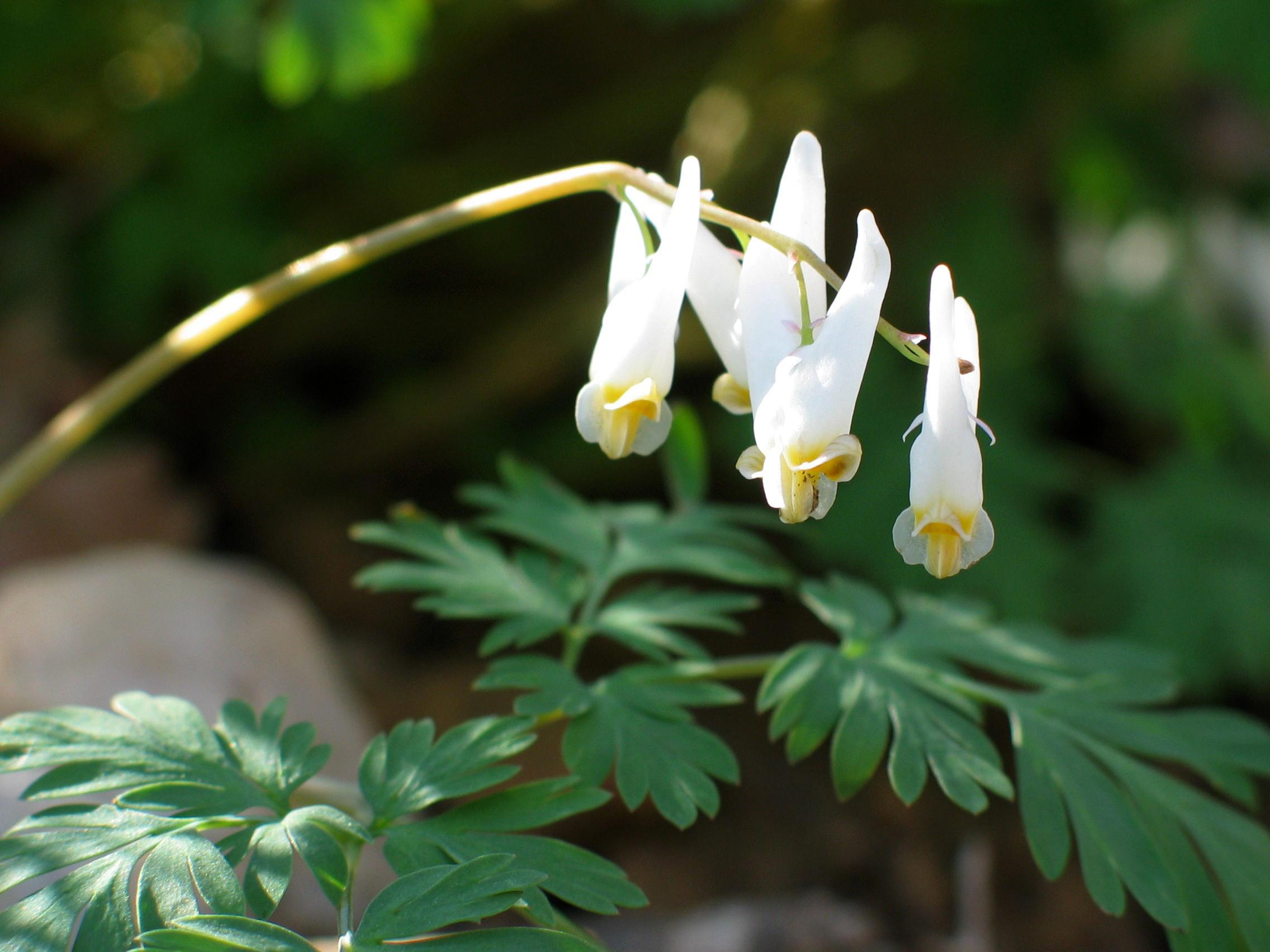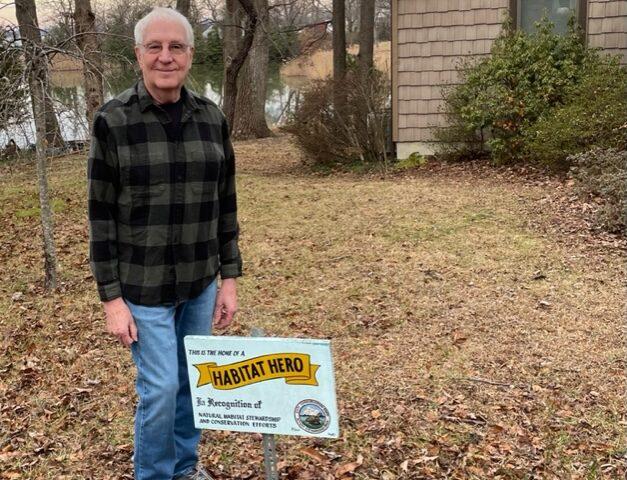
Resolve to Plant a Tree
November 16, 2022
Spring Ephemerals
February 15, 2023Rob Wood
For the final Habitat Hero of 2022 Cape Conservation Corps has selected Rob Wood, along the edge of the Serene Ravine on Lakeview Lane. I have visited Rob’s property on several occasions and have been amazed at the transformation. By removing invasive phragmites, native plants have come in our their own and Rob has added to them by planting natives as well. Let’s hear from Rob in his own words some of the success he has had in creating his own healthy ecosystem and habitat.
“Over the years I have planted ferns around the house and down by the marsh such as the marginal wood fern and ostrich fern. Bill and I have been working on eradicating the phragmites for at least five years. We are continually fighting this battle. When the tide is out I try to cut down any that I see coming up. The first year of the eradication it was amazing how the native plants all started coming back; including saltmarsh fleabane, dotted smartweed, Virginia saltmarsh mallow, water hemlock which is very poisonous but the insects love the blooms, highbush blueberry, orange jewelweed, curly dock, pond-water starwort, whorled pennywort, swamp loosestrife, common cattail, carelessweed, bulltongue arrowhead, arrow arum, late boneset and some bushes coming up – Jesuit’s bark. Last year we saw, for the first time, narrowleaf cattail.
I have also planted a few things in the marsh; some did well, others not so much. My greatest success is the iris versicolor, sweetflag and duck potato. A funny thing, the first year we got rid of the phragmites, I ordered a whole lot of marsh plants including arrow arum, duck potato, saltmeadow cordgrass. I spent several hours walking through the marsh and planting over a hundred small seedlings. That night a high tide came in and washed most everything away. Nature did a better job, I discovered, with all of the plants that came back after years of waiting. More recently I planted a buttonbush, a crimsoneyed rosemallow and a bald cypress.
Plants that grow around the marsh other than poison ivy and English ivy are euonymus americanus, wild azaleas, mountain laurel and sweetbay magnolia. I once saw a jack in the pulpit but no more.
The wildlife in our yard is the same as just about everyone else in the Cape, foxes, lots of foxes. We used to have rabbits but not since the foxes showed up, gray squirrels, deer, occasionally. What stands out are the birds. Many water loving birds around Lake Claire I have seen are bald eagles, great egrets, snowy egrets, great blue herons, mallards, terns, seagulls, barred owls, eastern screech owls, great horned owls, red tailed hawks. In the winter we have had to see hooded mergansers but with all of the mild winters we’ve had lately they quit coming around. I also have many of common backyard birds as well as the blue jays, cardinals, wrens, black birds.”
Rob has spent time trying to save the trees around his property and near the Serene Ravine by removing the vines trying to choke them off. In addition to removing phragmites, he removed about 20 nandina and replaced them with the native spicebush- a host plant for spicebush swallowtail caterpillars. He has a bluebird house, water sources and brush piles to encourage and create habitat. With all Rob has done to enhance his property it is easy to see how he has become our Habitat Hero.









